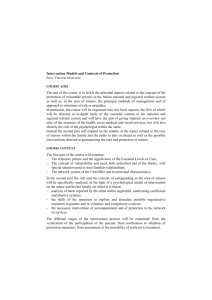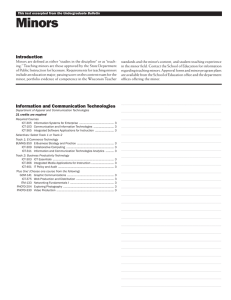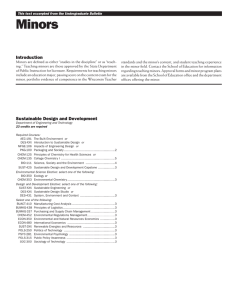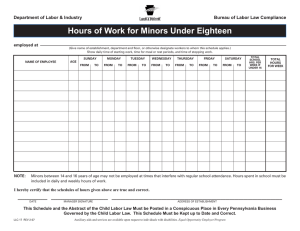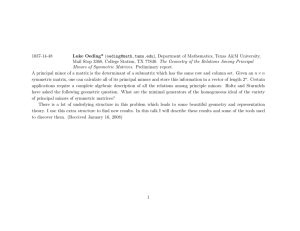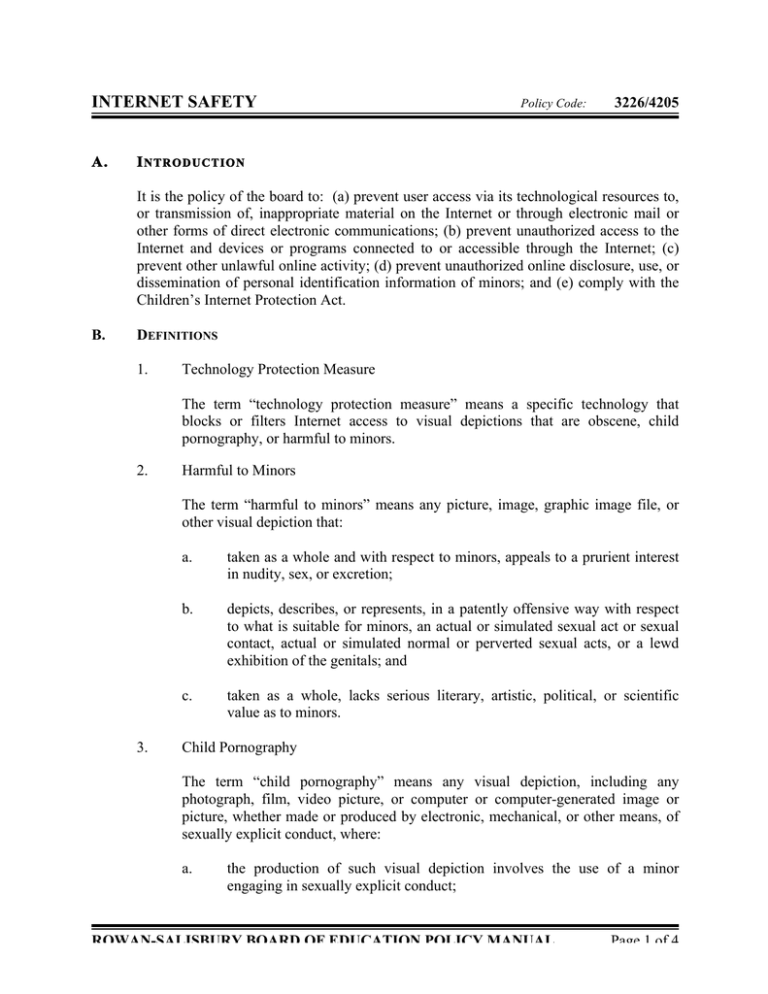
INTERNET SAFETY
A.
Policy Code:
3226/4205
I NTRODUCTION
It is the policy of the board to: (a) prevent user access via its technological resources to,
or transmission of, inappropriate material on the Internet or through electronic mail or
other forms of direct electronic communications; (b) prevent unauthorized access to the
Internet and devices or programs connected to or accessible through the Internet; (c)
prevent other unlawful online activity; (d) prevent unauthorized online disclosure, use, or
dissemination of personal identification information of minors; and (e) comply with the
Children’s Internet Protection Act.
B.
DEFINITIONS
1.
Technology Protection Measure
The term “technology protection measure” means a specific technology that
blocks or filters Internet access to visual depictions that are obscene, child
pornography, or harmful to minors.
2.
Harmful to Minors
The term “harmful to minors” means any picture, image, graphic image file, or
other visual depiction that:
3.
a.
taken as a whole and with respect to minors, appeals to a prurient interest
in nudity, sex, or excretion;
b.
depicts, describes, or represents, in a patently offensive way with respect
to what is suitable for minors, an actual or simulated sexual act or sexual
contact, actual or simulated normal or perverted sexual acts, or a lewd
exhibition of the genitals; and
c.
taken as a whole, lacks serious literary, artistic, political, or scientific
value as to minors.
Child Pornography
The term “child pornography” means any visual depiction, including any
photograph, film, video picture, or computer or computer-generated image or
picture, whether made or produced by electronic, mechanical, or other means, of
sexually explicit conduct, where:
a.
the production of such visual depiction involves the use of a minor
engaging in sexually explicit conduct;
ROWAN-SALISBURY BOARD OF EDUCATION POLICY MANUAL
Page 1 of 4
Policy Code:
4.
3226/4205
b.
such visual depiction is a digital image, computer image, or computergenerated image that is, or is indistinguishable from, that of a minor
engaging in sexually explicit conduct; or
c.
such visual depiction has been created, adapted, or modified to appear that
an identifiable minor is engaging in sexually explicit conduct.
Sexual Act; Sexual Contact
The terms “sexual act” and “sexual contact” have the meanings given such terms
in section 2246 of title 18, United States Code.
5.
Minor
For purposes of this policy, the term “minor” means any individual who has not
attained the age of 17 years.
C.
A CCESS
TO
I NAPPROPRIATE M ATERIAL
To the extent practical, technology protection measures (or “Internet filters”) will be used
to block or filter access to inappropriate information on the Internet and World Wide
Web. Specifically, blocking will be applied to audio and visual depictions deemed
obscene or to be child pornography or harmful to minors. Student access to other
materials that are inappropriate to minors will also be restricted. The board has
determined that audio or visual materials that depict violence, nudity, or graphic language
that does not serve a legitimate pedagogical purpose are inappropriate for minors. The
superintendent, in conjunction with a school technology and media advisory committee
(see policy 3200, Selection of Instructional Materials), shall make a determination
regarding what other matter or materials are inappropriate for minors. School system
personnel may not restrict Internet access to ideas, perspectives, or viewpoints if the
restriction is motivated solely by disapproval of the viewpoints involved.
A student or employee must immediately notify the appropriate school official if the
student or employee believes that a website or web content that is available to students
through the school system’s Internet access is obscene, constitutes child pornography, is
“harmful to minors” as defined by CIPA, or is otherwise inappropriate for students.
Students must notify a teacher or the school principal; employees must notify the
superintendent or designee.
Due to the dynamic nature of the Internet, sometimes Internet websites and web material
that should not be restricted are blocked by the Internet filter. A student or employee
who believes that a website or web content has been improperly blocked by the school
system’s filter should bring the website to the attention of the principal. The principal
shall confer with the technology director to determine whether the site or content should
be unblocked. The principal shall notify the student or teacher promptly of the decision.
ROWAN-SALISBURY BOARD OF EDUCATION POLICY MANUAL
Page 2 of 4
Policy Code:
3226/4205
The decision may be appealed through the school system’s grievance procedure. (See
policies 1740/4010, Student and Parent Grievance Procedure, and 1750/7220, Grievance
Procedure for Employees.)
Subject to staff supervision, technology protection measures may be disabled during use
by an adult for bona fide research or other lawful purposes.
D.
I NAPPROPRIATE N ETWORK U SAGE
All users of school system technological resources are expected to comply with the
requirements established in policy 3225/4312/7320, Technology Responsible Use. In
particular, users are prohibited from: (a) attempting to gain unauthorized access,
including “hacking” and engaging in other similar unlawful activities; and (b) engaging
in the unauthorized disclosure, use, or dissemination of personal identifying information
regarding minors.
E.
E DUCATION , S UPERVISION ,
AND
M ONITORING
To the extent practical, steps will be taken to promote the safety and security of users of
the school system’s online computer network, especially when they are using electronic
mail, chat rooms, instant messaging, and other forms of direct electronic
communications. It is the responsibility of all school personnel to educate, supervise, and
monitor usage of the online computer network and access to the Internet in accordance
with this policy, the Children’s Internet Protection Act, the Neighborhood Children’s
Internet Protection Act and the Protecting Children in the 21st Century Act.
Procedures for the disabling or otherwise modifying any technology protection measures
are the responsibility of the technology director or designated representatives.
The technology director or designated representatives shall provide age-appropriate
training for students who use the school system’s Internet services. The training provided
will be designed to promote the school system’s commitment to educating students in
digital literacy and citizenship, including:
1.
the standards and acceptable use of Internet services as set forth in policy
3225/4312/7320, Technology Responsible Use;
2.
student safety with regard to safety on the Internet, appropriate behavior while
online, including behavior on social networking websites and in chat rooms, and
cyberbullying awareness and response; and
3.
compliance with the E-rate requirements of the Children’s Internet Protection Act.
Following receipt of this training, the student must acknowledge that he or she received
the training, understood it, and will follow the provisions of policy 3225/4312/7320,
Technology Responsible Use.
ROWAN-SALISBURY BOARD OF EDUCATION POLICY MANUAL
Page 3 of 4
Policy Code:
3226/4205
The superintendent shall develop any regulations needed to implement this policy and shall
submit any certifications necessary to demonstrate compliance with this policy.
Legal References: Children’s Internet Protection Act, 47 U.S.C. 254(h); Neighborhood
Children’s Internet Protection Act, 47 U.S.C. 254(l); Protecting Children in the 21st Century Act,
47, U.S.C. 254(h)
Cross References: Professional and Staff Development (policy 1610/7800), Student and Parent
Grievance Procedure (policy 1740/4010), Grievance Procedure for Employees (policy
1750/7220), Technology in the Educational Program (policy 3220), Technology Responsible Use
(policy 3225/4312/7320), School Improvement Plan (policy 3430), Use of Equipment, Materials,
and Supplies (policy 6520), Network Security (policy 6524)
Adopted: ___________at a public meeting, following normal public notice
Replaces:
Adopted:
ROWAN-SALISBURY BOARD OF EDUCATION POLICY MANUAL
Page 4 of 4

